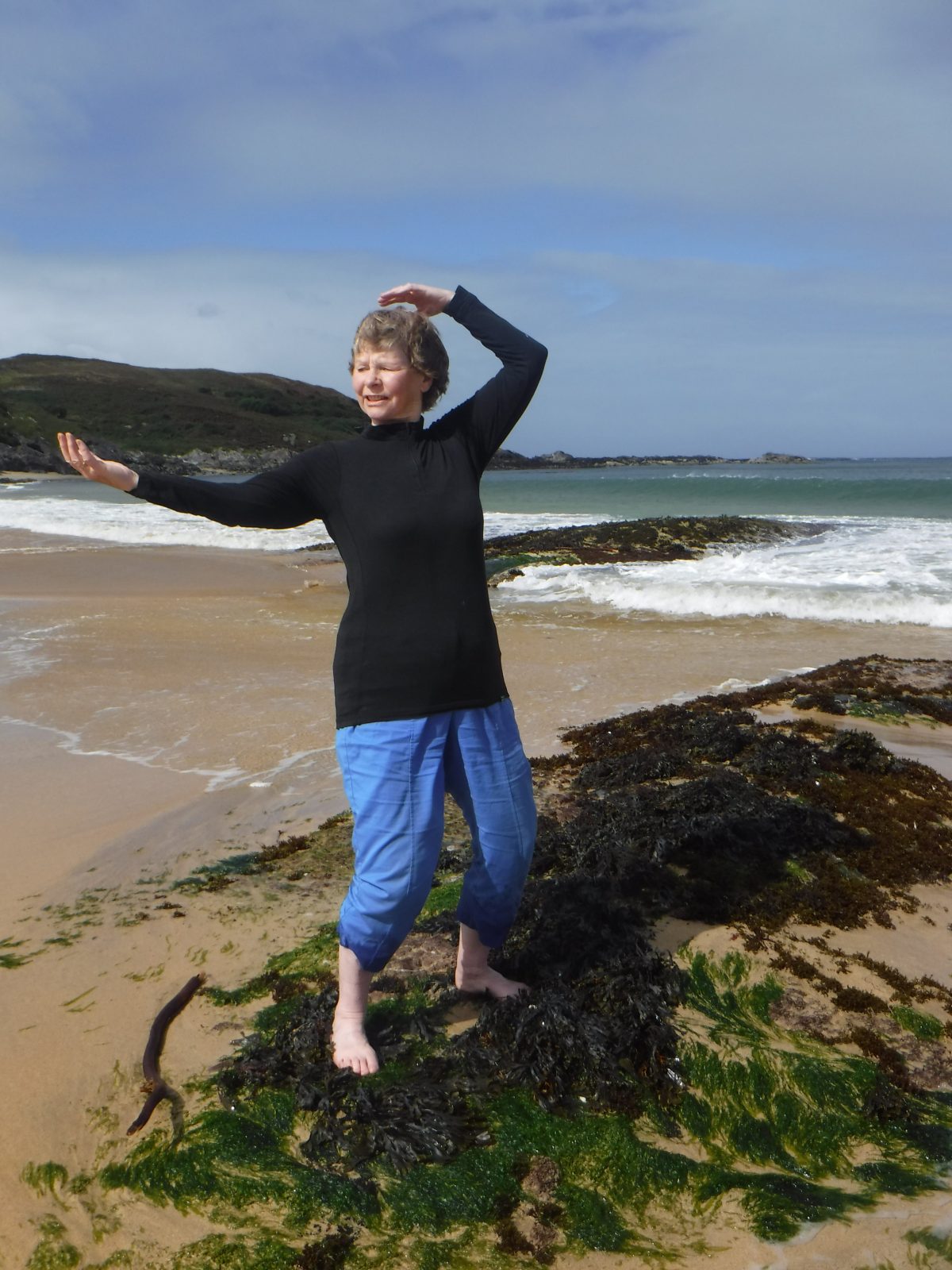As someone who operates as something of a taiji orphan, with no other members of my school in the vicinity, I always look forward to a week at Tai Chi Caledonia, where I can meet and mix with people from many different schools.
This year, I also had the privilege of interviewing Harriet Devlin for the Tai Chi Union magazine. Harriet is the daughter of the legendary Gerda Geddes, who was the first person to bring taiji to the west. Stationed in Shanghai with her husband at the time of the communist takeover, she spotted an old man practising slow, careful moves one morning. As a dancer herself, she was fascinated, but it wasn’t until she escaped to Hong Kong, that she had the opportunity to learn more about the art she had witnessed.
She found a teacher and despite there being a complete language vacuum, “Missy watch, Missy see,” being the extent of verbal tuition and of course a taboo on touch, even for correction, she learnt the long yang form. On returning to England she tried to keep up her practice but had to send for a recording, which she diligently followed until she knew it well.
From there she combined her other skill, psychotherapy, and helped traumatised victims of war, as well as dancers and musicians, to use their bodies to express their emotions. I can not imagine the single mindedness she needed to reach this stage. And then she began to teach taiji for its own sake, though still only the long yang form. She wrote a book called In Search of the Golden Needle, in which she describes the allegorical journey she created to explain the taiji moves. Her biography, by Frank Woods, is called Dancer In The Light and details her truly extraordinary life.
This set me thinking about the contrast between those who have the opportunity to practise with others, either on an equal basis or under a caring teacher and those who have to go it alone. At Tai Chi Caledonia, as well as international teachers, we worked with international students, Italian, Spanish, French, Canadian, German, Dutch, Swedish, Norwegian, Irish and Greek (I think) almost outnumbering the Brits. Do you go with what you know, going deeper into the practice, or do you explore something new, to see what can be applied to broaden your knowledge rather than deepen it?
The weekend offers a dizzy mix of 45 minute taster sessions in a choice of styles, Wu, Chen and Yang, with less well-known variations such as Lihuebafa, from James Carss, to spice things up.
During the week, however, you choose two teachers and subjects to work on in depth. For me there was no hesitation in choosing Paul Silfverstråle, from my style but based in Sweden. Paul was teaching martial arts which normally I avoid because I can’t continue the partner work, but Paul is such a great teacher and applies the teaching to everything, that I went for it. So deeper.
I also chose Chiara Vendettuoli, who taught the Swimming Dragon qigong form. I had no particular desire to learn another qigong form, but the opportunity to work with a student of Franco Mescola who saw the significance of the spiral form in our energy work, was irresistible. And broader.
By the end of the week you feel a peculiar mix of gratitude, rejuvenation and exhaustion, there is much hugging and exchanging of contact details and, usually, determination to keep up the good work.
Sincere thanks to the dynamic duo, Al and Aileen and their army of helpers.
Roll on next year and keep July 12th free.







